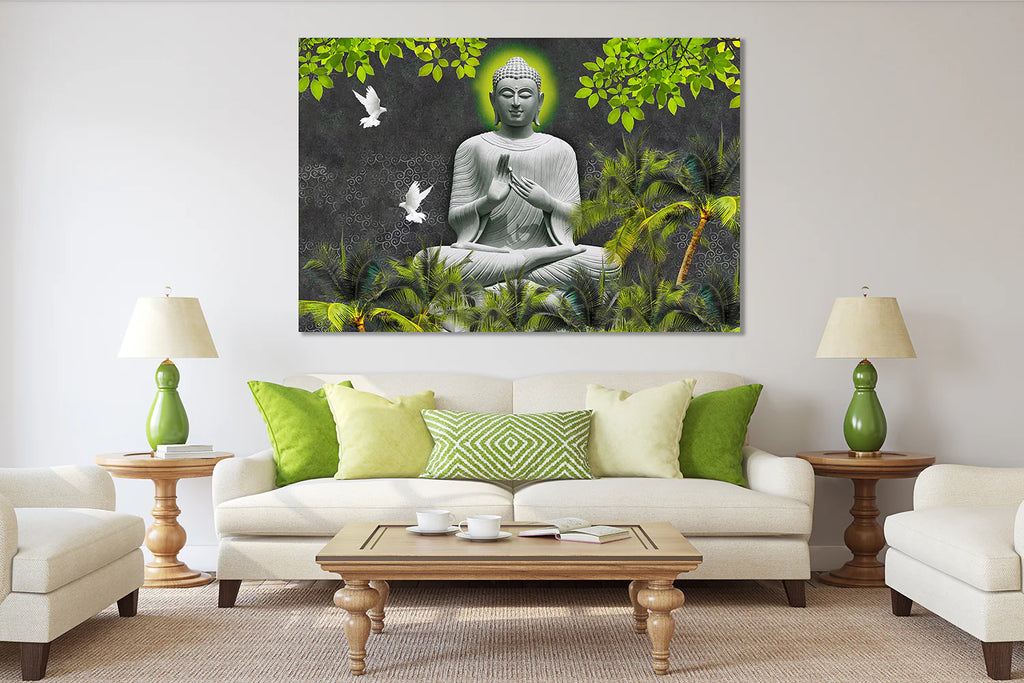
Islamic Calligraphy Wall Canvas Art Print

One of the most prominent features of Islamic art is Islamic calligraphy. Since Islamic visual art is non-representational, Islamic calligraphy is one of the most popular art forms in the Muslim world. It involves writing alphabets that are derived from the sacred Muslim Scripture, The Holy Quran. But it is not solely based on that. Islamic Calligraphy also involved beautifying texts from other languages such as Urdu, Persian, and the Ottoman. Calligraphy in Arabic is also known as Khatt Arbi which roughly translates to Arabic designs or lines. It is commonly believed that Calligraphy became a major art form in Islamic Art because it avoids figurative representation however, this is not the case entirely. Reading and writing have a profound place in the Islamic religion. The first revelation revealed upon the Holy Prophet(PBUH), also stated that the first thing created by God was a pen. Therefore, Calligraphy also has religious importance and is considered a craft of great importance and value.
Islamic Calligraphy has been practiced since the beginning of the 7th century in Muslim territories throughout the world. The two major art forms that have emerged as a result of this are Kufic and Naskh. The Islamic civilization was spread all over the world, therefore regional variations are part of the two major styles mentioned previously. Overall, Islamic Calligraphy comprises 5 styles, Naksh, Nasta’liq, Diwani, Thuluth, and Reqa. Traditional calligraphy technique requires the use of a pen also known as a kalam locally. It is made from dried reed or bamboo.
Islamic calligraphy is not restricted to paper and has been applied to numerous materials such as tiles, vessels, stone, and carpets to produce exquisite and picturesque calligraphy ornaments. Long before the paper was introduced, calligraphy was also performed on papyrus and parchment. The advent of paper acted as fuel to the fire as libraries in the Muslim world were full of texts and books that contained countless ideas and subject matters camouflaged in between the layers of beautifully written letters and words. Calligraphy was further developed and supported in 692 when the coinage was reformed by the Islamic Caliphate. The coins then used Islamic phrases and verses from the Quran. These were common on dinars and other gold coins of high value.
In the modern world, Islamic Calligraphy still holds its exalted status but was transformed into a modern art movement during the mid-20th century. It was initiated by Ibrahim el Salahi in 1955 in North Africa. Modern artists now use calligraphy as a graphic element in their artworks. This use of calligraphy also became known as the Huruffiya movement. Harf is an Arabic word that translates to the letter and Huruf is the plural form. The movement allowed Muslim artists to mix together, Muslim artistic expression with western art concepts. In other words, artists were able to display the cultural heritage and Islamic traditions using a contemporary composition. To date, calligraphy is a dominant art form that continues to present itself through various expressions.





